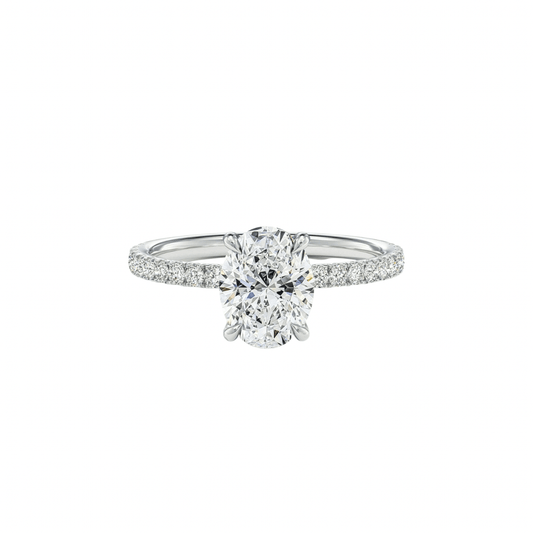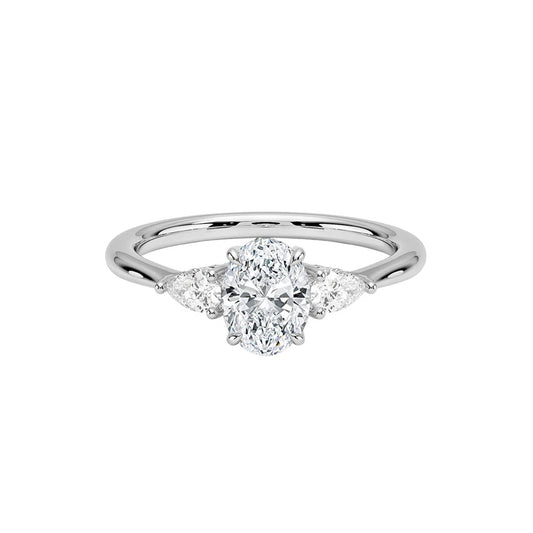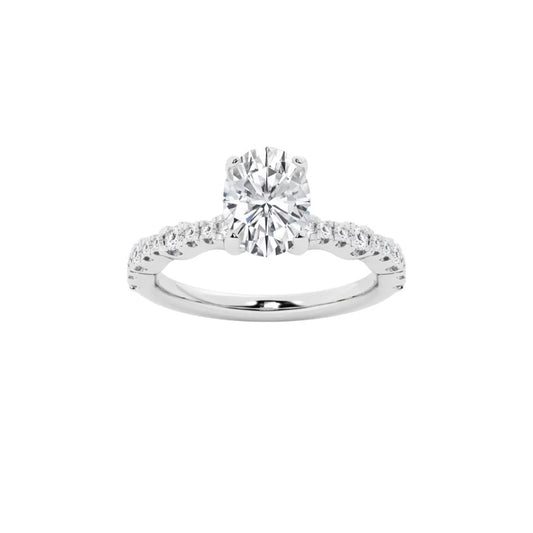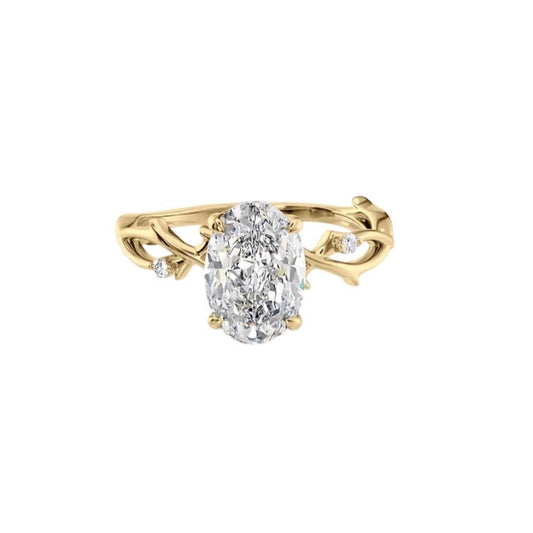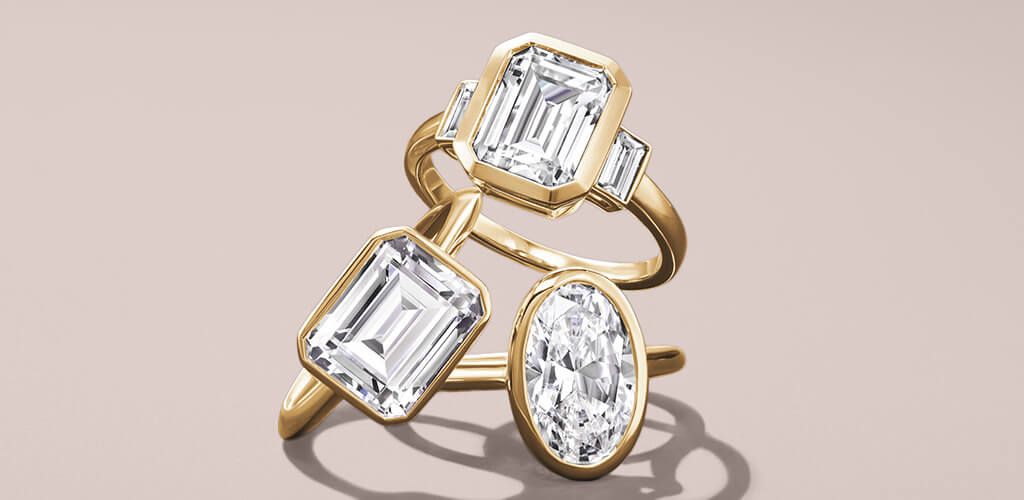
14K vs 18K Gold: Which Shines Brighter for Your Engagement Ring?

 Choosing gold engagement rings are about more than diamonds. The band itself matters just as much. The metal you choose affects how the ring looks, feels, and wears over time. It also influences cost, comfort, and care.
Choosing gold engagement rings are about more than diamonds. The band itself matters just as much. The metal you choose affects how the ring looks, feels, and wears over time. It also influences cost, comfort, and care.
The two most popular options today are 14K gold and 18K gold. At first glance, they may appear similar. Yet they differ in purity, durability, color, and price. Hope you will understand the difference between them after reading this article. Very help you to find the right ring setting material for your budget and lifestyle.
In this guide, we’ll cover:
- What “karat gold” means
- 14K gold: key features, pros, and everyday performance
- 18K gold: key features, pros, and who it’s best for
- A side-by-side comparison of 14K vs 18K gold
- How to choose the best option for your engagement ring
What Does “Karat” Mean?
“Karat” (K) measures gold purity, expressed out of 24 parts. Pure 24K gold is 100% gold. While beautiful, it is soft and bends but easy to be scratches . That’s why jewelers mix gold with alloy metals like copper, silver, nickel, or palladium. The result is a stronger, more durable alloy fit for daily wear (GIA, 2023).
Here’s how gold purity breaks down:
- 24K Gold = 100% pure gold (too soft for everyday jewelry)
- 18K Gold = 75% gold + 25% alloy metals
- 14K Gold = 58.3% gold + 41.7% alloy metals
More alloys mean greater hardness and scratch resistance. Less alloy means a richer yellow color but lower durability.

Is 14k gold good for engagement rings?
Many jewelers call 14K gold the best choice. Couples also prefer it for simple engagement rings. Containing over 40% alloy metal, it combines durability, affordability, and aesthetics.
Benefits of 14K Gold:
- Durability: 14K gold is harder and more resistant to scratches. It’s ideal for everyday wear and active lifestyles (Brilliant Earth, n.d.).
- Affordability: On average, 14K gold costs 20–30% less than 18K gold (Brilliant Earth, n.d.).
- Versatility: Available in yellow, white, and rose gold. It keeps a warm, subtle color that pairs with diamonds or colored gemstones.
- Popularity: In 2022, The Knot found that most American couples chose 14K gold. About 60% picked 14K, while only 18% picked 18K.
Color of 14K Gold
Alloy metals change how 14K gold looks:
- 14K Yellow Gold: Softer, more muted yellow than 18K. Works well with all skin tones and is easy to pair with diamonds.
- 14K White Gold: Blended with nickel, zinc, or palladium, and coated in rhodium. This gives a sleek silver-white shine and adds scratch resistance.
- 14K Rose Gold: Warm, pink color from copper alloys. Romantic and trendy, especially popular in engagement and wedding jewelry.
14K gold is durable, versatile, and timeless. It balances strength and elegance, making it a favorite for everyday rings.

18K Gold: Rich Color and Luxury Appeal
18K gold is prized for its higher purity and luxury appeal. With 75% gold, it shines with a deeper yellow hue that feels rich and traditional.
Benefits of 18K Gold:
- Richer Color: Its vibrant yellow appeals to those who prefer the classic look of gold.
- Prestige Factor: Higher purity makes it desirable for luxury jewelry and formal occasions.
- Hypoallergenic: 18K gold has less alloy metal. This makes it safer for people with sensitive skin (GIA, 2023).
Drawbacks of 18K Gold:
- Softness: 18K gold is softer and scratches more easily. Not the best choice for active lifestyles.
- Cost: It costs 25–40% more than 14K, making it less budget-friendly (GoodStone, 2025).
- Maintenance: Requires more care to stay polished and scratch-free.
18K gold shines with richness and exclusivity. It is best for occasional wear or for couples who want tradition over practicality

14K vs 18K Gold: Side-by-Side Comparison
Here’s a quick breakdown to help you decide:
Purity:
- 18K = 75% gold (richer color, softer metal)
- 14K = 58.3% gold (harder, more durable)
Durability:
- 14K resists scratches and dents, better for everyday wear (Brilliant Earth, n.d.)
- 18K scratches more easily, better for occasional wear
Color & Appearance:
- 18K = deeper, traditional yellow
- 14K = softer, subtle warmth, versatile in yellow, white, and rose
Price:
- 18K = higher cost (25–40% more expensive)
- 14K = more affordable, better value (Brilliant Earth, n.d.)
Hypoallergenic Properties:
- 18K = less likely to irritate skin
- 14K = may contain nickel but nickel-free versions widely available (Gabriel NY, n.d.)
Popularity in the U.S.:
- 14K = most common choice for engagement rings (The Knot, 2022)
- 18K = chosen for luxury appeal and tradition

How to Choose the Right Gold for Your Engagement Ring
When deciding between 14K and 18K gold, think about:
- Lifestyle: Active or hands-on jobs? Go with 14K for durability.
- Budget: 14K is the better value, while 18K is for luxury spenders.
- Skin Sensitivity: If your skin is sensitive, 18K may be safer due to fewer alloy metals.
- Style Preference: Love the rich yellow look? Choose 18K. Want everyday balance? Choose 14K.
- Design: Both come in yellow, white, and rose. Choose based on personal style.
Why 14K Gold Is the Best Balance
Both 14K and 18K gold have strengths. But 14K gold offers the best balance of durability, affordability, and beauty. It’s tough enough to last a lifetime while keeping the shine of real gold. That’s why most couples in the U.S. trust 14K gold for their engagement rings (Brilliant Earth, n.d.; The Knot, 2022).
If you want a ring that’s elegant, strong, and budget-friendly, 14K is the clear winner.
Choose 14K Gold for a Ring That Lasts
Engagement bands are made to last forever. Your choice of metal should reflect both beauty and practicality. 14K gold is strong and durable. It is affordable and keeps its shine. This makes it the perfect setting for your dream diamond.
Ready to find the perfect ring? Explore BunnyBaily‘s exclusive 14K gold engagement rings today. Choose the one that will shine for a lifetime.

FAQs-14K VS 18K Gold
💎Q1: Is 14k or 18k gold better for everyday wear?
14k gold is more durable and resistant to scratches, making it the better choice for daily wear jewelry like engagement rings and wedding bands.
💎Q2: Which looks more yellow, 14k or 18k gold?
18k gold has a richer, warmer yellow color due to its higher gold content (75% vs. 58.3%). 14k gold looks slightly paler but still has a natural golden shine.
💎Q3: Is 14k gold cheaper than 18k gold?
Yes. 14k gold is generally 20–35% less expensive than 18k gold, making it a popular option for couples looking for both beauty and value.
💎Q4: Can 14k gold cause allergies?
Both 14k and 18k gold are usually hypoallergenic, but 18k has a lower chance of irritation because it contains fewer alloy metals. For sensitive skin, nickel-free 14k gold is also a safe choice.
💎Q5: Which is better for engagement rings: 14k or 18k?
For long-term daily wear, we recommend 14k gold for its durability. If you want a more luxurious look and don’t mind extra care, 18k gold is an elegant choice.
References
Brilliant Earth. (n.d.). 14K vs 18K gold: Comparison guide. Retrieved August 22, 2025, from https://www.brilliantearth.com
Gemological Institute of America. (2023). Gold jewelry: Alloys, karats, and value. Retrieved from https://www.gia.edu
James Allen. (2025). 14K Gold vs 18K Gold: What’s the difference? Retrieved from https://blog.jamesallen.com
Jewelers of America. (2022). Gold jewelry guide. Retrieved from https://www.jewelers.org
The Knot. (2022). Jewelry and Engagement Study. Retrieved from https://www.theknot.com

